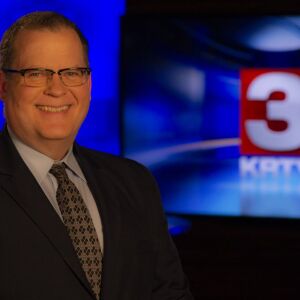GREAT FALLS — Montana is a great place to film the aurora borealis, often called the Northern Lights. Some people even make money off their images of the meteorological phenomenon. Knowing how to use your camera, a little assistance from technology, and paying attention to the forecast can make your pictures the envy of astronomy enthusiasts.
Josh Rutledge (website) of Great Falls has been able to capture some amazing images of the Northern Lights. “The biggest challenge is just the unpredictability of the Northern Lights. You never know when they're going to show up.”
- Tasty Hot Pot opens in Great Falls
- Young stabbing suspect arrested in GF
- Woman dies after being hit by car
- Recent Obituaries on KRTV
Aurora Borealis occur when the sun releases energized particles known as coronal mass ejections, or CMEs, to the earth’s atmosphere.
“When those CMEs or energized solar particles from the sun reach earth's atmosphere, then they get redirected to the poles by the magnetic field and they interact with chemicals in Earth's atmosphere to create what we call the Northern Lights,” said MTN Meteorologist Ryan Dennis.
The closer you are to one of those poles, the better the chances of seeing them.
“Since we are far enough north, as long as we see a strong enough geomagnetic storm, then we can see them here in Montana,” said Dennis.
Josh says whether you have thousands of dollars invested in photography equipment like him, or just a smartphone - patience and stability will pay off in getting the right shot.
“The trick is time. You need to have your camera steady for a long time and keep your shutter open,” said Rutledge. “So, any camera with manual settings will work. Even your modern cell phones. But the trick is to keep it steady, so you need a good tripod or stick it on a rock.”
And from expert to novice, Josh says living in a rural state like Montana means you don’t have to go far to get that incredible shot when the Northern Lights are in range.
"You can head up Bootlegger (Trail), head north of town, somewhere out there is great. Heading towards Fort Benton, as long as you're not getting too close. Anywhere here, north of town, once you get five or six miles out of town, you're usually all right,” said Rutledge.
It is also a good idea to pay attention to the weather forecast: “If there's cloud cover or storms around, then you can't see them,” said Dennis. “You need clear skies, and you basically have to have a clear view towards the north.”
Josh adds that help from technology can be beneficial in shooting the northern lights.
“I usually use a couple of different apps since the Northern Lights are so unpredictable,” said Rutledge. “Sometimes, the predictions will be different on one app versus another, but when you get two or three of them agreeing, you know, it might actually happen.” He says the My Aurora app is the best he’s found.
Known for his timelapse photography, Josh says his favorite shots include a farm scene north of Great Falls, a shot of the lights in the backdrop of the Judith Mountains outside Lewistown, and a chance shot of the northern lights from his family cabin near Helmville.
The final product is rewarding, but even the effort of getting the shot can be gratifying.
"It’s very peaceful, very relaxing, a totally different perspective on things being in the dark,” said Rutledge. “You can see the stars and things you don't always see.”
Two other resources for knowing when the Aurora Borealis might be visible in our area are the Space Weather Prediction Center and Soft Serve News.





